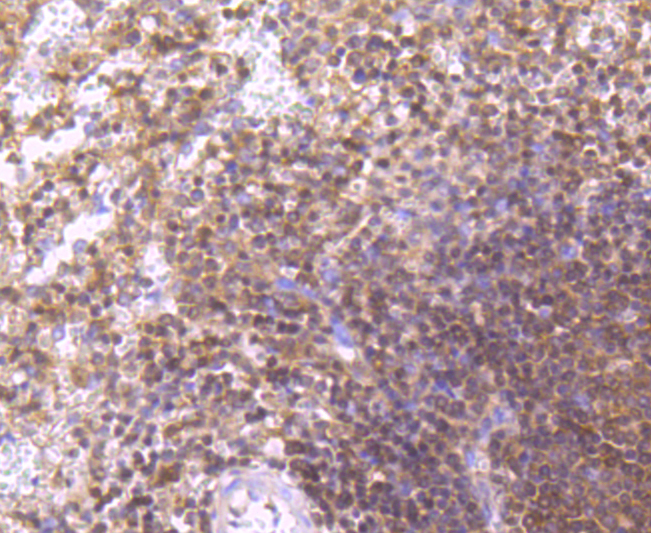Product Detail
Product NameIntegrin alpha 4 Rabbit mAb
Clone No.SR4544
Host SpeciesRecombinant Rabbit
Clonality Monoclonal
PurificationProA affinity purified
ApplicationsWB, IHC, FC
Species ReactivityHu
Immunogen Descrecombinant protein
ConjugateUnconjugated
Other Names269C wild type antibody
Antigen CD49D, alpha 4 subunit of VLA 4 receptor antibody
CD49 antigen like family member D antibody
CD49 antigen-like family member D antibody
CD49d antibody
IA4 antibody
Integrin alpha 4 antibody
Integrin alpha 4 subunit antibody
Integrin alpha IV antibody
Integrin alpha-4 antibody
Integrin alpha-IV antibody
Integrin, alpha 4 (antigen CD49D, alpha 4 subunit of VLA 4 receptor) antibody
ITA4_HUMAN antibody
ITGA4 antibody
MGC90518 antibody
OTTHUMP00000205320 antibody
Very late activation protein 4 receptor, alpha 4 subunit antibody
VLA 4 subunit alpha antibody
VLA-4 subunit alpha antibody
VLA4 antibody
Accession NoSwiss-Prot#:P13473
Uniprot
P13473
Gene ID
3920;
Calculated MW150 kDa
Formulation1*TBS (pH7.4), 1%BSA, 40%Glycerol. Preservative: 0.05% Sodium Azide.
StorageStore at -20˚C
Application Details
WB: 1:500-1:1,000
IHC: 1:50-1:200
FC: 1:10-1:50
Immunohistochemical analysis of paraffin-embedded human tonsil tissue using anti-Integrin alpha 4 antibody. Counter stained with hematoxylin.
Immunohistochemical analysis of paraffin-embedded human spleen tissue using anti-Integrin alpha 4 antibody. Counter stained with hematoxylin.
Flow cytometric analysis of Jurkat cells with Integrin alpha 4 antibody at 1/100 dilution (red) compared with an unlabelled control (cells without incubation with primary antibody; black). Alexa Fluor 488-conjugated Goat anti mouse IgG was used as the secondary antibody.
Integrins are heterodimers composed of noncovalently associated transmembrane α and β subunits. The 16 α and 8 β subunits heterodimerize to produce more than 20 different receptors. Most integrin receptors bind ligands that are components of the extracellular matrix, including fibronectin, collagen and vitronectin. Certain integrins can also bind to soluble ligands such as fibrinogen, or to counterreceptors on adjacent cells such as the intracellular adhesion molecules (ICAMs), leading to aggregation of cells. Ligands serve to cross-link or cluster integrins by binding to adjacent integrin receptors; both receptor clustering and ligand occupancy are necessary for the activation of integrin-mediated responses. In addition to mediating cell adhesion and cytoskeletal organization, integrins function as signaling receptors. Signals transduced by integrins play a role in many biological processes, including cell growth, differentiation, migration and apoptosis.
If you have published an article using product 49543, please notify us so that we can cite your literature.





 Yes
Yes



